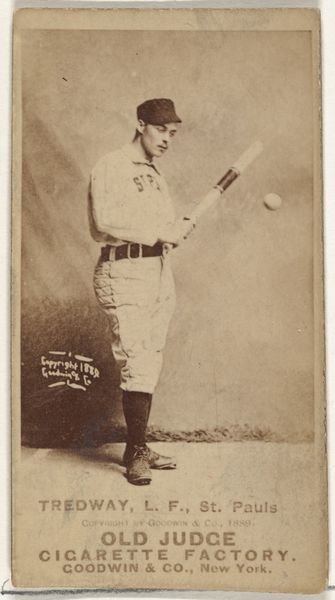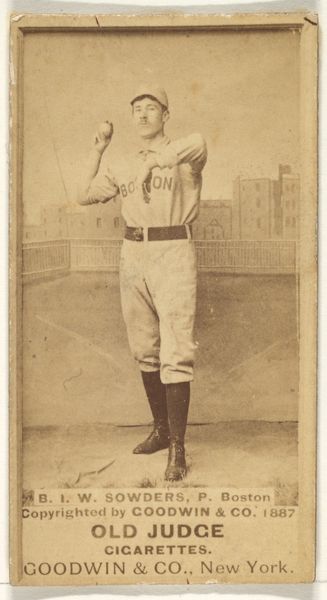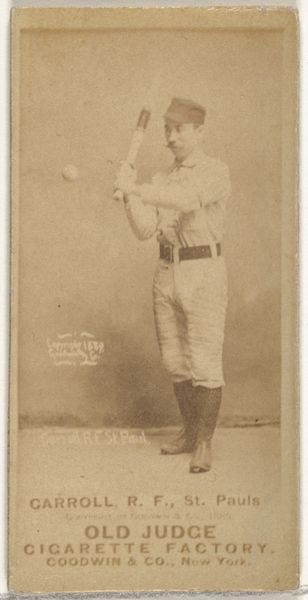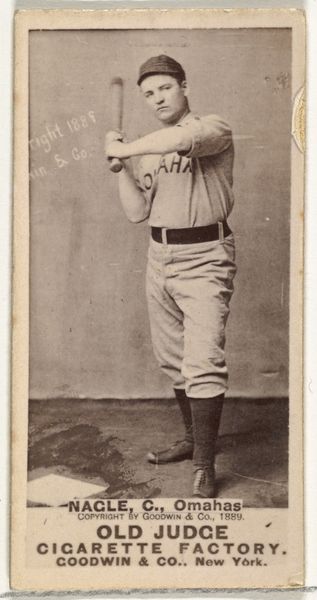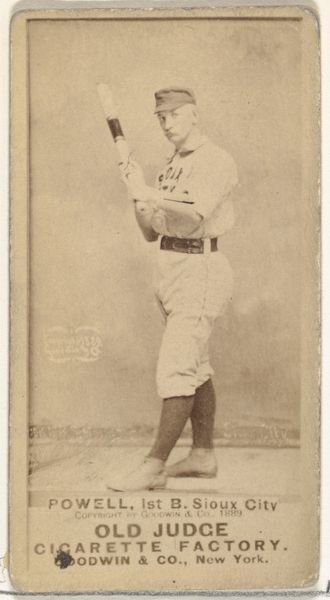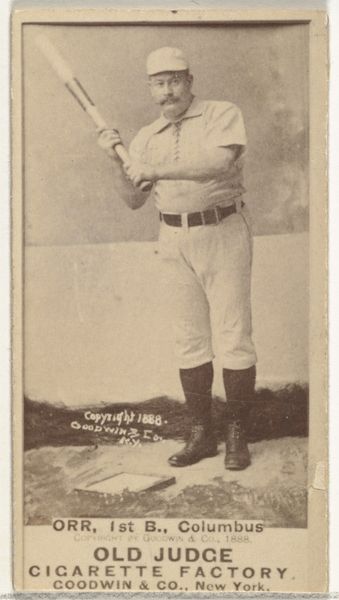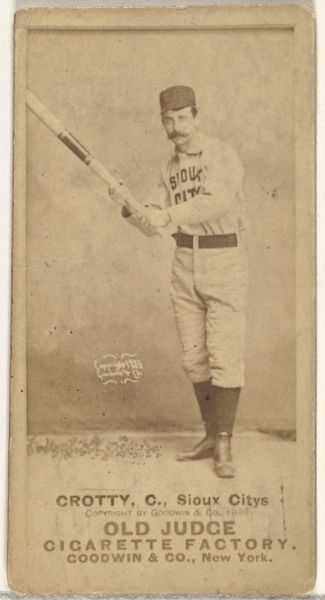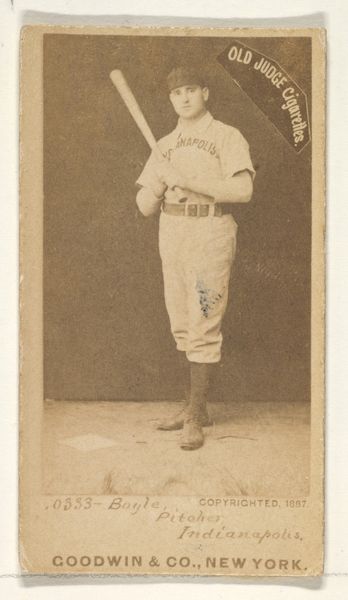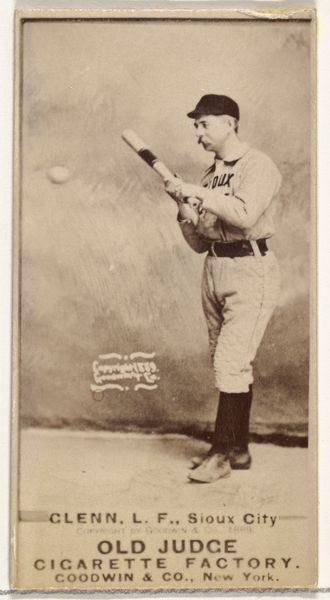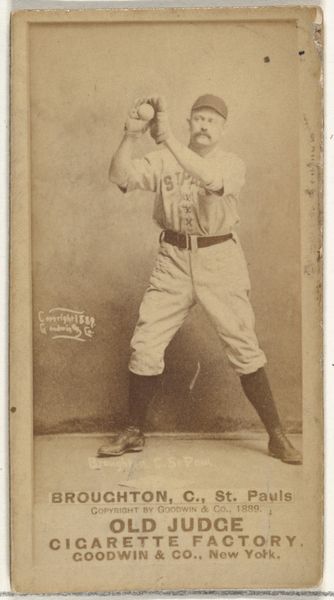
H. Smith, Shortstop, St. Joseph Clay Eaters, from the Old Judge series (N172) for Old Judge Cigarettes 1889
0:00
0:00
drawing, print, photography
#
portrait
#
drawing
# print
#
baseball
#
photography
#
men
#
athlete
#
realism
Dimensions: sheet: 2 11/16 x 1 3/8 in. (6.9 x 3.5 cm)
Copyright: Public Domain
Editor: So, this is "H. Smith, Shortstop, St. Joseph Clay Eaters," a baseball card from 1889. Goodwin & Company produced it as part of the "Old Judge Cigarettes" series. It's a photograph, a print really, and what strikes me is how staged it feels. It's interesting seeing an early form of commercial image-making, but also quite stiff compared to modern sports photography. What's your take on this piece? Curator: This image operates within a specific economy, a web of production linking photography, baseball, and tobacco. Think about the albumen print process used at the time, relatively inexpensive yet integral to mass-producing these cards. Baseball's rising popularity fuelled the demand, while cigarettes funded the whole enterprise. This is where “art” meets industry, no? The cigarette factory became a sort of studio, shaping the visual language of sports heroes for a consumer market. Does the “stiffness” you observed perhaps reflect the pressures and conventions of production at the time? Editor: That's a great point about the industrial aspect! I hadn't really considered how the needs of a cigarette company influenced the image. How do you think the Old Judge series changed perceptions, if at all, regarding sports and athletes? Curator: The cards normalized athletes as figures for mass consumption, turning them into brands of a sort. Before, sports figures existed more in local spheres. Suddenly, images like this, reproduced en masse and circulated widely, started forming national narratives about sports heroes. They weren't just athletes, but products embedded in an evolving consumer culture. Were the people at the time even thinking about that? Probably not, but with hindsight… Editor: I suppose this card represents both art and commerce intersecting. It definitely puts a new spin on my initial view of it. Curator: Exactly. Seeing art within material and economic processes helps demystify artistic genius. It’s never *just* about individual inspiration; it’s about the entire system of making and meaning.
Comments
No comments
Be the first to comment and join the conversation on the ultimate creative platform.

